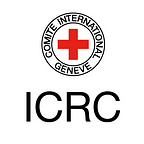Regulating the art of war
The Thirty Years’ War saw some of the most violent and bloodiest episodes in history. But it was more than just a frenzy of wanton atrocities. From the chaos of the battlefield emerged new rules — some driven by the very pragmatic need to conserve energy, others by religious dictate.
One unwritten rule was that invading forces should spare villages and towns that showed no resistance, so as not to provoke needless hostility towards the occupying troops.
In Aphorisms on the Art of War, Italian military commander Raimondo Montecuccoli argued that while terror and hunger were legitimate methods of warfare, those who surrendered without putting up a fight were entitled to humane treatment.
And in his 1639 handbook on war, French chevalier Antoine de Ville instructed commanders to pillage whatever they wanted and set fire to everything else, but warned that soldiers should respect three things — churches and the clergy, the honour of women and the lives of non-combatants — lest they “offend God and invite His vengeance”.
Perhaps the most influential work of all was the three-part De Jure Belli ac Pacis (The Law of War and Peace), published in 1625 by Hugo Grotius, a future negotiator of the Peace of Westphalia. In Book 3, he laid the foundations of the law of war:
Fully convinced, by the considerations which I have advanced, that there is a common law among nations, which is valid alike for war and in war, I have had many and weighty reasons for undertaking to write upon the subject. (…) I observed that men rush to arms for slight causes, or no cause at all, and that when arms have once been taken up there is no longer any respect for law, divine or human; it is as if, in accordance with a general decree, frenzy had openly been let loose for the committing of all crimes.
Examples taken from: G. Hanlon, “Wartime mortality in Italy’s Thirty Years War: The duchy of Parma 1635–1637”, Histoire, économie & société, Vol. 4, 2012
***
